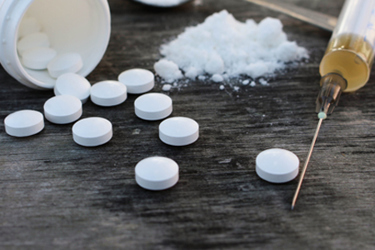Addressing 3 Challenges Of Developing Or Using A New Excipient

New solutions for and innovation of excipients are critical but often overlooked. Excipients aren’t just about flavors, colors, and coatings anymore. Excipients could enable critical functions such as improving bioavailability or enabling IV to intramuscular formulations. As the world discovers new molecular entities and shifts toward biologics, novel excipients are important more than ever. Let’s look at three key challenges: risk aversion, an inconsistent feedback loop between pharma companies and excipient suppliers, and the current lack of regulatory body-backed innovation programs — and how to address each one.
Challenge #1: Risk Aversion
In pharma, most companies want to be “the first to be the second or the third”. While this risk aversion is understood, it also stalls innovation in the excipients space. When it comes to medication, there is no room for taking chances. Using a new excipient is seen as taking a chance and making your organization vulnerable to regulatory hurdles. To a certain extent, it is. But new doesn’t mean unsafe or ineffective. Precedence of use and safety could be correlated, but it’s not the same. Risk aversion on the part of one player in the value chain can spread to the entire value chain. Pharma companies often ask excipient suppliers, “Is it listed in FDA’s Inactive Ingredients Database (IID)?”, which is something the supplier doesn’t have control over. Pharma companies also expect a significant amount of data on multiple aspects of the new excipients. This expectation, while understandable, discourages excipient suppliers’ motivation to invest in new products.
How To Address It: Try to be receptive to new materials even if there is no precedent for their use in medications. Pharma companies could ask for a preliminary set of safety and toxicity studies rather than expecting full-blown safety and toxicity studies. You could carry out formulation studies and provide feedback to the supplier on the new material’s fitness for use. A feedback loop will encourage the excipient developer to invest further; I’ll further examine the feedback loop in the section below.
Many pharma ingredient makers will have their internal toxicology team, and a collaboration between pharma companies’ and excipient makers’ toxicologists will help find critical failure pain points early in the process. In some cases, an excipient might not be in the FDA’s IID, but it could have been in one or two approved drugs, and pharma companies should be receptive to trying such excipients. When pharma companies take a stand that an excipient won’t be considered until it’s listed in IID, it demotivates the excipient maker and stifles innovation. It takes years to get into one approved formulation and it would take several years for many drugs to be approved wherein an excipient would then be listed in IID.
Pharma companies could also consider the option of controlled correspondence with the regulators to understand things such as maximum daily intake.
Challenge #2: Inconsistent Feedback Loop Between Pharma Company And Excipient Suppliers
A formulation scientist works on two to three projects on average in a year. As formulators juggle projects, certain studies could take a few months. When a new material is tried and the assessment is complete, if the new material did not solve the problem, the formulators move on to the next solution. Excipient suppliers also may not proactively seek feedback. In many cases, due to the sensitive nature of the industry, many pharma companies are hesitant to share the specifics of what worked or what didn’t work with the new excipient. As a result, innovation and product development of excipients happen in a vacuum, without feedback from formulators to suppliers.
How To Address It: Consider establishing a formal program with your excipient supplier(s) to jointly innovate. With such a program, it is advisable to have bi-annual meetings to seek and provide feedback. Having a confidential disclosure agreement will enable both parties to exchange information, including the specifics. While it can be unsettling to disclose sensitive information, many excipient suppliers can help with their expertise in chemistry and material science. In some cases, the ingredient maker might be able to tweak the chemistry of the ingredient. So, it’s critical to have a feedback loop that goes into the details and mechanics.
While excipient suppliers have experts on materials, they are not experts on mechanism of action and which data sets prove certain in-vitro and in-vivo studies. Pharma companies should share their thoughts on the mechanism of action of the new excipients and suggest studies that should be carried out by the material suppliers. Again, the suggestion is that the pharma company should request only the studies that are needed for the next stage rather than asking for a full battery of studies.
Challenge #3: Lack Of Regulatory Body-Backed Innovation Programs
There was not a regulatory authority-backed excipient innovation program until recently, when the FDA launched PRIME (Pilot Program for the Review of Innovation and Modernization of Excipients), a voluntary pilot program to encourage novel excipients. Apart from FDA’s program, there aren’t any other regulatory body-backed innovation programs in the world. It is also unclear what the outcome of successful participation in the program would be or what criteria are used to select participants for the program.
How To Address It: Harmonization of regulatory standards across the globe is not unusual in pharma. Ideally, regulatory bodies across the globe could have a harmonized program to encourage the innovation of novel excipients. Industry trade associations, pharma companies, and excipient suppliers could influence the regional regulatory bodies to initiate a globally harmonized new excipient program so that excipient suppliers innovating in one geography can translate their results to other geographies. Pharma companies could provide input to the regulatory bodies on pain points and what criteria could be used to select candidates for innovation program participation. Criteria for selection and requirements to participate in and graduate from the program should be clearly laid out. Also, regulatory bodies should provide a letter of endorsement or some sort of certification that a material is considered safe and the FDA does not object to it being tried in a drug formulation. This will encourage both pharma companies and suppliers to innovate.
Excipients are critical for drug delivery. Innovations in excipients will enable better and new cures to improve public health. To enable innovation, pharma companies should be more receptive to trying new materials with a preliminary set of safety/toxicity studies, establishing a feedback loop with suppliers, and working closely with the regulatory bodies to establish and enhance regulatory body-backed excipient innovation programs.
About The Author:
 Rajendran (Raj) Arunagiri has been in the pharma industry for a decade and has successfully developed and launched a new excipient. He is a co-author of technical articles and is an invited speaker at conferences focused on excipients and drug delivery. Arunagiri welcomes you to reach out to him for questions, comments, and collaboration ideas at raj.gceb@gmail.com.
Rajendran (Raj) Arunagiri has been in the pharma industry for a decade and has successfully developed and launched a new excipient. He is a co-author of technical articles and is an invited speaker at conferences focused on excipients and drug delivery. Arunagiri welcomes you to reach out to him for questions, comments, and collaboration ideas at raj.gceb@gmail.com.
